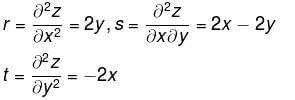IIT JAM Exam > IIT JAM Tests > Differential Calculus MCQ Level - 1 - IIT JAM MCQ
Differential Calculus MCQ Level - 1 - IIT JAM MCQ
Test Description
10 Questions MCQ Test - Differential Calculus MCQ Level - 1
Differential Calculus MCQ Level - 1 for IIT JAM 2025 is part of IIT JAM preparation. The Differential Calculus MCQ Level - 1 questions and answers have been prepared
according to the IIT JAM exam syllabus.The Differential Calculus MCQ Level - 1 MCQs are made for IIT JAM 2025 Exam.
Find important definitions, questions, notes, meanings, examples, exercises, MCQs and online tests for Differential Calculus MCQ Level - 1 below.
Solutions of Differential Calculus MCQ Level - 1 questions in English are available as part of our course for IIT JAM & Differential Calculus MCQ Level - 1 solutions in
Hindi for IIT JAM course.
Download more important topics, notes, lectures and mock test series for IIT JAM Exam by signing up for free. Attempt Differential Calculus MCQ Level - 1 | 10 questions in 30 minutes | Mock test for IIT JAM preparation | Free important questions MCQ to study for IIT JAM Exam | Download free PDF with solutions
Differential Calculus MCQ Level - 1 - Question 1
The functIon u(x, y) = x2 + xy + 3x + 2y + 5 has a point of :
Detailed Solution for Differential Calculus MCQ Level - 1 - Question 1
Detailed Solution for Differential Calculus MCQ Level - 1 - Question 2
Differential Calculus MCQ Level - 1 - Question 3
The points on z2 = xy + 1 nearest to the origin are :
Detailed Solution for Differential Calculus MCQ Level - 1 - Question 3
Differential Calculus MCQ Level - 1 - Question 4
The values of x1 and x2 with x1 < x2 such that  has the largest value are :
has the largest value are :
Detailed Solution for Differential Calculus MCQ Level - 1 - Question 4
Differential Calculus MCQ Level - 1 - Question 5
The sum of two number is k. The minima value of the sum of their squares is :
Detailed Solution for Differential Calculus MCQ Level - 1 - Question 5
Detailed Solution for Differential Calculus MCQ Level - 1 - Question 6
Differential Calculus MCQ Level - 1 - Question 7
For the function x2 + y2, (0, 0) is a point of :
Detailed Solution for Differential Calculus MCQ Level - 1 - Question 7
Differential Calculus MCQ Level - 1 - Question 8
If dy/dx = (x - a)2n (x - b)2p + 1, where n and p are positive integers, then at x = a, x = b, f(x) has respectively :
Detailed Solution for Differential Calculus MCQ Level - 1 - Question 8
Differential Calculus MCQ Level - 1 - Question 9
The maximum value of (x – 1)(x – 2)(x – 3) is :
Detailed Solution for Differential Calculus MCQ Level - 1 - Question 9
Differential Calculus MCQ Level - 1 - Question 10
The saddle point of the function z = x2y – y2x – x + y is :
Detailed Solution for Differential Calculus MCQ Level - 1 - Question 10
Information about Differential Calculus MCQ Level - 1 Page
In this test you can find the Exam questions for Differential Calculus MCQ Level - 1 solved & explained in the simplest way possible.
Besides giving Questions and answers for Differential Calculus MCQ Level - 1, EduRev gives you an ample number of Online tests for practice
Download as PDF



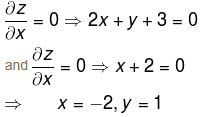
 is maximum at x= :
is maximum at x= :




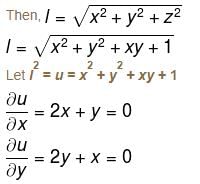



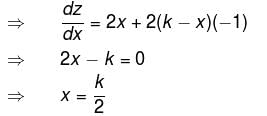
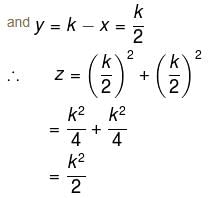



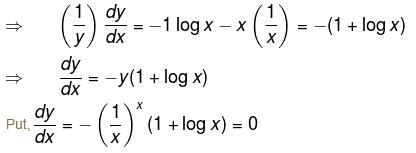
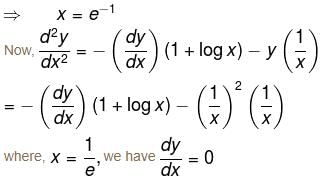



 is negative as 2p + 1 is odd.
is negative as 2p + 1 is odd. is positive. Thus, y is minimum at x = b.
is positive. Thus, y is minimum at x = b.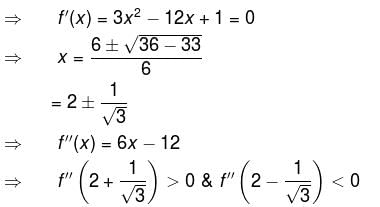
 and f(x) has maxima at
and f(x) has maxima at 



